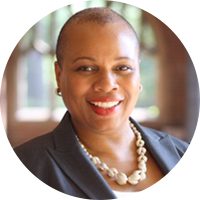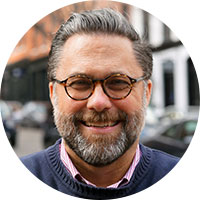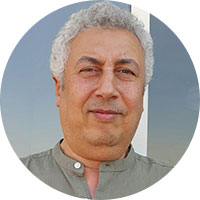-
Membership
Membership
Anyone with an interest in the history of the built environment is welcome to join the Society of Architectural Historians -
Conferences
Conferences
SAH Annual International Conferences bring members together for scholarly exchange and networking -
Publications
Publications
Through print and digital publications, SAH documents the history of the built environment and disseminates scholarship -
Programs
Programs
SAH promotes meaningful engagement with the history of the built environment through its programs -
Jobs & Opportunities
Jobs & Opportunities
SAH provides resources, fellowships, and grants to help further your career and professional life -
Support
Support
We invite you to support the educational mission of SAH by making a gift, becoming a member, or volunteering -
About
About
SAH promotes the study, interpretation, and conservation of the built environment worldwide for the benefit of all
Two-Part Discussion on the Removal of Monuments from Public Spaces
In the “Statement on the Removal of Monuments to the Confederacy from Public Spaces”, issued on June 19, 2020, the Society of Architectural Historians Heritage Conservation Committee and Board of Directors formally advocated for the removal of Confederate monuments from public spaces in the United States. This statement marked the first time in SAH’s 80-year history that the Society’s leadership recommended such an action with regard to the built environment. The statement explains that the removal of monuments to the Confederacy, potent symbols of white supremacy, is a necessary step toward racial justice and equity in the U.S. SAH recognizes, however, that Confederate monuments are not the only objects in the public realm that hold the power to oppress and there are built structures all across the world that do the same.
To continue the dialogue on the larger issue at hand—the removal of monuments from public spaces—SAH will host two online panel discussions. Part 1 will focus on the specific case of monuments to the Confederacy in the United States. Part 2 will consider the role of monuments in international contexts and the larger question of sites with difficult histories. Both panels will include individuals from a variety of disciplines to engage with this challenging subject from the vantage points of their academic fields and life experiences. There will be opportunities for audience members to comment and ask questions.
Part 1: Removal of Confederate Monuments from Public Spaces
Part 2: International Monuments and Contested Sites
Part 1: Removal of Confederate Monuments from Public Spaces
Program Date: Wednesday, July 15, 2020
Moderated by SAH Heritage Conservation Committee Chair Bryan Clark Green, PhD, LEED AP BD+C, Senior Associate/Director of Historic Preservation, Commonwealth Architects, Richmond, Virginia, the first panel brings together several subject matter experts who will engage in a discussion about Confederate memorials:
-
Michael Dickinson, PhD, Assistant Professor of History, Virginia Commonwealth University, author of the forthcoming Almost Dead: Slavery and Social Rebirth in the Black Urban Atlantic, 1680–1807
-
Zena Howard, FAIA, LEED AP, is Managing Director of the North Carolina practice of Perkins and Will. She is known for her success leading visionary and culturally-significant projects, such as the multi-firm, multi-stakeholder project she spearheaded for the Smithsonian Institution's National Museum of African American History and Culture.
-
Lauranett L. Lee, PhD, Public History Consultant at L.L. Lee & Associates and Adjunct Assistant Professor at the University of Richmond, former Curator of African American History at the Virginia Historical Society, and member of the Monument Avenue Commission
-
Burt Pinnock, FAIA, Chairman and Principal, Baskervill Architecture and Planning, Richmond, Virginia
-
Dell Upton, PhD, FSAH, Professor Emeritus, Art History Department, University of California, Los Angeles, and author of What Can and Can’t be Said: Race, Uplift, and Monument Building in the Contemporary South

Michael Dickinson is an assistant professor of history at Virginia Commonwealth University. Recently, he was the 2019–2020 Barra Sabbatical Fellow at University of Pennsylvania's McNeil Center for Early American Studies. His research examines enslaved black lives and communities in eighteenth and nineteenth century cities. His book Almost Dead: Slavery and Social Rebirth in the Black Urban Atlantic, 1680-1807 is forthcoming with University of Georgia Press in 2021.
Dr. Dickinson has written pieces on Confederate memorials, historical memory, and racial oppression in Black Perspectives, The Bitter Southerner, and the VCU public history blog. His interviews on the topic have also been featured on the Dogwood newspaper, Vox News, and CNN's The Situation Room.

Zena Howard, FAIA is managing director of the North Carolina practice of global architecture and design firm Perkins and Will. An award-winning architect, Zena is known for leading visionary, complex, and culturally-significant projects, such as the multi-firm, multi-stakeholder effort for Smithsonian Institution’s National Museum of African American History and Culture in Washington, D.C.
Through her work with private and public institutions, Zena engages communities and stakeholders to redress painful issues, bridge diverse experiences, inspire resilient communities, and infuse culture into projects. Her leadership embraces cross-disciplinary collaboration as an essential design tool to integrate a broad range of experience and specialized knowledge, such as urban design, public policy, art, history, economics, and anthropology, into the architectural process.

Dr. Lauranett Lee is a public historian specializing in teaching, advocating, and collaborating with diverse community and academic audiences. She was the founding curator of African American history at the Virginia Historical Society (2001–2016). In 2011, she worked with a team of colleagues at VHS to launch a genealogical tool called Unknown No Longer: A Database of Virginia Slave Names. In 2008, she published Making the American Dream Work: A Cultural History of African Americans in Hopewell, Virginia, an oral history project commissioned by the Hopewell City Council.
Lee sits on several boards and is engaged in various community service initiatives. In 2017, Richmond Mayor Levar Stoney appointed her to the Monument Avenue Commission, tasked with making recommendations on the future of the Confederate monuments lining one of the city’s most famous boulevards. She is the co-chair of the University of Richmond’s Presidential Commission for University History and Identity and the director of the University’s Institutional History Research Team.

Burt Pinnock, FAIA, is chairman and principal of Baskervill, a 123-year-old architecture and interior design firm based in Richmond, Virginia. His work includes Richmond’s Reconciliation Plaza and Slave Trail, Virginia Civil Rights Memorial on Capitol Square, The Black History Museum of Virginia, A Proposal for Emancipation Proclamation and Freedom Monument, and A Concept for The National Slavery Museum in Richmond. He is currently working on William & Mary’s Memorial to the Enslaved and the University of Richmond’s Burying Ground Memorial.

Dell Upton served as Distinguished Professor of Architectural History at UCLA from 2008–2020 and previously taught at UC Berkeley for two decades. He is a historian of architecture, material culture, and cities, with a longstanding interest in African-American history, architecture and material culture, and early in his career in studied landscapes of slavery. His many publications include What Can and Can’t Be Said: Race, Uplift, and Monument Building in the Contemporary South (Yale University Press, 2015), Another City: Urban Life and Urban Spaces in the New American Republic (Yale University Press, 2008) and Architecture in the United States (Oxford History of Art, 1998).

Bryan Clark Green, Ph.D., is an architectural historian and Director of Historic Preservation for Commonwealth Architects in Richmond, Virginia. Bryan is the author of In Jefferson’s Shadow: The Architecture of Thomas R. Blackburn, among other books and articles, and lectures on Virginia’s architectural history and historic preservation issues. He serves on the Citizens Advisory Council on Furnishing and Interpreting the Executive Mansion. He is also the chair of the SAH Heritage Conservation Committee, serving as an ex officio member of the board, and led the development of SAH’s statement encouraging the removal of Confederate monuments from public spaces. He is also the founder and executive director of the Heritage Conservation Foundation, a nonprofit organization conducting Capturing the Architect’s Voice, an oral history of architects in Virginia. Bryan graduated from the University of Notre Dame with a BA in history, and obtained an MAH and PH.D. in architectural history at the University of Virginia.
Part 2: International Monuments and Contested Sites
Program Date: Wednesday, August 19, 2020
Monuments, buildings, and landscapes can become relevant to a group as they reveal and solidify their socio-cultural norms. These notions can shift, be appropriated, or destroyed by others, as power dynamics change. This discussion reveals through five cases studies from around the world, the power of the built landscape to represent culture, and the negative and positive responses that can occur to these representations.
Each panelist will present their site for approximately five minutes and webinar attendees will be encouraged to engage in lively conversation about these sites and others that reveal the layers of history found in the built environment at sites of contested memory.
The discussion will be moderated by SAH Heritage Conservation Committee Chair Bryan Clark Green.
Jeff Cody
The role of colonialism as a catalyst both for the creation of architectural monuments (corporate and otherwise) and their reformulation in the 21st century will focus Cody’s remarks. He will reflect on his personal familiarity with Hong Kong and Shanghai as examples. Cody will also suggest that other cataclysmic events—related to both internal an/or external political catastrophes—have exacerbated salient responses to the eradication and/or retention of “places of shame”, with examples from Hiroshima, Japan, and Phnom Penh, Cambodia.
Rachel Kousser
In ancient Greece, sculptures were washed, clothed, and fed; believed to move, sweat, and breathe; and at times mutilated, buried, or destroyed in attacks that furnish incontrovertible evidence of the monuments' uncanny power. At the same time, these behaviors were both practiced and problematized. Due to their unique historical experience during the Persian Wars, the Greeks characterized the destruction of sculptures as impious, barbaric, and fundamentally un-Hellenic. Their attitudes have profoundly influenced later discussions of attacks on monuments, from the ancient world to the present day.
Hossam Mahdy
Mahdy considers that the erection and destruction of monuments and statues are political acts, as the Black Live Matter movement has demonstrated. Similar acts by Muslim groups and individuals are political, too. They are not motivated by Islam. In many cases such acts are strongly prohibited by Islam, but the media conveniently uses such acts to feed the growing Islamophobia.
Mrinalini Rajagopalan
Rajagopalan will discuss the vexations of monuments in independent India with a specific focus on the statues of former British colonizers. She will compare two sites in Mumbai and Delhi; the Kala Ghoda (Black Horse) statue in South Mumbai, which is currently a horse without a horseman because the horseman (King Edward VII) has long been redacted from the statue and the empty canopy at the terminus of the main axis of New Delhi that once housed the statue of King George V, and which has since been banished to the margins of the city. This discussion considers these edited public icons as India's attempts to grapple with its colonial history, all the while maintaining the colonial legacies of preservation.
Daniela Sandler
In Brazil, monuments to Portuguese colonizers, former slave pillories and markets, and sites named for dictators still stand—but in recent years, calls to remove statues and change street names have grown stronger. These calls are complicated by the country's lack of a robust public memorial culture. In this context, it is important to acknowledge not only calls to remove monuments, but also the many grassroots efforts to recover and inscribe difficult histories in urban landscapes.

Jeff Cody is a senior project specialist in the Building & Sites Department of the Getty Conservation Institute, where he coordinates an urban conservation training course in Penang, Malaysia (“Old Cities, New Challenges”) for mid-career practitioners from ASEAN countries. Jeff received his PhD from Cornell University; from 1995 to 2004 he taught architectural history in the Architecture School of the Chinese University of Hong Kong and he served for four years on Hong Kong’s Antiquities Advisory Board. In July 2019, the Getty published an anthology of writings about urban conservation that Jeff co-edited with Francesco Siravo of the Aga Khan’s Historic Cities Programme, entitled Historic Cities: Issues in Urban Conservation.

Rachel Kousser is professor at Brooklyn College and the Graduate Center, City University of New York; she is also currently the executive officer of the Ph.D. program in Art History at the Graduate Center. In her writing and teaching, she focuses on the Greeks' creation, transformation, and destruction of monuments; the representation of gender, sexuality, and power in the classical era; and the place of Greek art within the globally interconnected ancient world. Her most recent work, The Afterlives of Greek Sculpture: Interaction, Transformation, Destruction (Cambridge University Press, 2017), received an Archaeological Institute of America Publication Subvention Award and was shortlisted for the Runciman Book Award for a book on Greek history or culture. Professor Kousser is also the author of Hellenistic and Roman Ideal Sculpture: The Allure of the Classical (Cambridge University Press, 2008) and of articles in Art Bulletin, RES: Anthropology and Aesthetics, and the American Journal of Archaeology. She has received fellowships from the National Endowment of the Humanities, the Getty Research Institute, and the Center for the Advanced Study of the Visual Arts. Her current project uses archaeological evidence to illuminate the last years of Alexander the Great; it is forthcoming from Custom House/HarperCollins.

Hossam Mahdy PhD is an Egyptian and British freelance consultant and independent researcher on the Conservation of Built Heritage. He is the elected president for ICOMOS CIAV for the period from 2021 to 2023. He was a visiting scholar at UCL Qatar in 2020, the Getty Conservation Institute in 2017, and an ICCROM Fellow in 2007. His books Approaches to the Conservation of Islamic Cities: The Case of Cairo and Glossary of Arabic Terms for the Conservation of Cultural Heritage are published by ICCROM. Hossam has a lifetime commitment to contributing to the development of a culture-specific approach, philosophy, and practice of cultural heritage conservation and management in the Arab Region. He is currently writing a book with the provisional title “Atlaal: The Significance of Pre-Islamic Ruins in Muslim Lands: The Case of Egypt” to be published by the Getty Conservation Institute.

Mrinalini Rajagopalan is associate professor in the Department of History of Art of Architecture at the University of Pittsburgh. She is the author of Building Histories: The Archival and Affective Lives of Five Monuments in Modern Delhi (Chicago, 2016), for which she received the Alice Davis Hitchcock Award from SAH in 2018. She is currently working on her next monograph, "The Marks She Made: The Art and Architecture of Begum Samru, 1803–1836". This book traces the built works and paintings commissioned by the Begum Samru, who rose from modest beginnings as a dancing girl to become the sovereign ruler of a prosperous territory in nineteenth-century North India. Rajagopalan will continue working on this project next year, while she is a fellow at the National Humanities Center.

Daniela Sandler is an associate professor of architectural and urban history at the University of Minnesota. Her work examines the intersections of socio-economic inequality, culture, and the built environment in Brazil and Germany. Her book, Counterpreservation: Architectural Decay in Berlin since 1989 (Cornell University Press, 2016), deals with decay, ruins, and architectural destruction in connection to memory, public space, and gentrification. Her book received the 2019 Antoinette Forrester Downing Book Award of the Society of Architectural Historians. Sandler has also published chapters and articles on World War II memorials, urban activism, and public space in Berlin and São Paulo, in Third Text, Social Identities, and Urban Design International, among others. She is working on a book manuscript on grassroots urbanism, cultural identities, and socio-economic inclusion in São Paulo.



